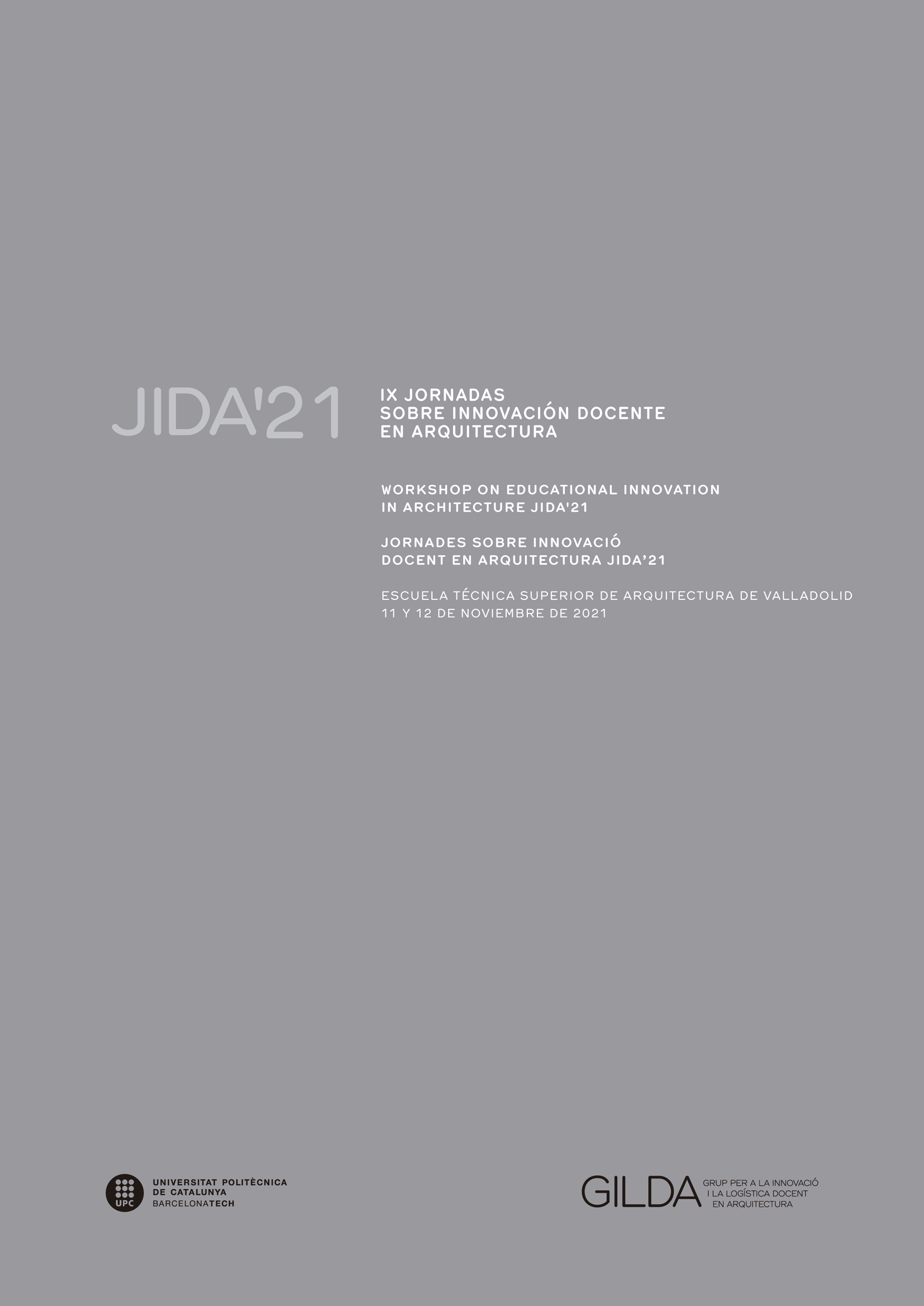Architecture and engineering: a parallel vision of architectural work
DOI:
https://doi.org/10.5821/jida.2021.10608Keywords:
structural truth, comparative architecture, architectural discourse, engineering, architectural communicationAbstract
The contribution of engineering was fundamental in the evolution of the modern form. Many of the advances introduced by the masters of the modern movement were accompanied by technical improvements that made it possible to build the new conceptions of space. The narrative of history often ignores this relationship and focuses on the figure of the architect. The work is shown as an inevitable consequence of its circumstances without references to technological advances. The dynamics of comparative architecture are used to present two parallel views of the same architectural object, in the same way that two buildings are placed in parallel to appreciate different ways of approaching them. The vision of architecture and engineering can show the different variables considered when approaching a building. The aim is to broaden the field of vision of design processes and to show that the comparative view is effective as a design tool.
References
ARBOIX-ALIÓ, A. (2020). “Redes sociales, historia y arquitectura” JIDA 8: textos de arquitectura docencia e innovación. Iniciativa Digital Politècnica.
DOMOSTI S, O. (2021). Arquitecto blanco, ingeniero negro (o viceversa). Jot Down.
<https://www.jotdown.es/2021/08/arquitecto-ingeniero-viceversa/> [Consulta: 20 de septiembre de 2021]
FERNÁNDEZ, C.; MANTEROLA, J.; y FERNÁNDEZ, L. (1977). Estructura de las Torres Colón—Madrid – España. Informes de la Construcción, 30(293), 61-94.
FRAMPTON, K., (1996). Historia crítica de la arquitectura moderna Barcelona : Gustavo Gili.
FRAMPTON, K. (2015). A genealogy of modern architecture: Comparative critical analysis of built form. Zurich: Lars Müller.
GARCÍA-ASENJO, DAVID (@dgllana): “"Pedí 36 bandejas de cafetería y unos tacos de madera. Y ya estaba lista la torre del banco" Paco Alonso sobre el BBVA.” 16 de mayo de 2017, 8:00 p.m. [Twitter]. https://twitter.com/dgllana/status/864541163830824960> [Consulta: 20 de septiembre de 2021]
GARCÍA-ASENJO, DAVID (@dgllana): “La historia de las torres de Colón siempre ha tenido que ver con el poder, la especulación y la destrucción del patrimonio arquitectónico. Durante los años 60 y 70 desaparecieron palacetes de la Castellana, sustituidos por modernos edificios de oficinas. @Juliaenlaonda” 10 de enero de 2020, 5:52 p.m. [Twitter]. <https://twitter.com/dgllana/status/1215677925456056321> [Consulta: 20 de septiembre de 2021]
KOMENDANT, A. (2000). 18 años con el arquitecto Louis I. Kahn. A Coruña: Colegio Oficial de Arquitectos de Galicia.
LE CORBUSIER. (1998) Hacia una arquitectura. Madrid: Apóstrofe
MÀRIA, M. y MUSQUERA, S. Arquitectura comparada. Habitar. Grupo de Investigación. https://habitar.upc.edu/2017/06/20/comparada-arquitectura-asignatura-master/ Consulta: 20 de septiembre de 2021]
MONEO, R. (2005). Sobre el concepto de arbitrariedad en arquitectura: Discurso. Real Academia de Bellas Artes de San Fernando.
MORENO, L.; TUÑÓN, E.; y CAPITEL, A. (2000). En torno a la figura de Rafael Moneo. Tectónica: monografías de arquitectura, tecnología y construcción, 12, 4-19.
SÁENZ DE OÍZA, F.J.; FERNÁNDEZ, C.; y MANTEROLA, J.M. (1970). “Estructura de Torres Blancas”, Madrid España. Informes de la Construcción, 23(226), 43-64.
SÁENZ DE OIZA, F.J. (2000). Banco de Bilbao. Madrid: ETSAM, Departamento de Proyectos.
THE GENERAL (@johnygrey): “Es tan buena la estructura del BBVA que parece que hubiera tenido al mejor ingeniero de caminos de puentes de España diseñándola... ...y es que así fue: es obra de Javier Manterola, a quien Oiza fue a buscar para presentarse juntos al concurso. En fin, más de lo mismo”. 6 de junio de 2021, 5:55 p.m. [Twitter] <https://twitter.com/johnygrey/status/1403630172067319812> [Consulta: 20 de septiembre de 2021]
THE GENERAL (@johnygrey): “¿Veis como mola la fachada exterior del Kursaal? ¿Os habéis fijado que el edificio está inclinado y no hay una sola diagonal entre sus nudos, que son todo rombos? Pues esa decisión a su riesgo, porque él la hacía real, es del ingeniero de caminos Javier Manterola. Igual os suena” 17 de diciembre de 2020, 7:39 p.m. [Twitter] <https://twitter.com/johnygrey/status/1339672624373313536> [Consulta: 20 de septiembre de 2021]
THE GENERAL (@johnygrey): “El ingeniero de Caminos que hizo realidad las torres Colón se llama Javier Manterola. Dios, vaya. Que los grandes arquitectos con los que trabajó no reconocieran su trabajo (Lamela sí, por cierto) hizo que Manterola dejara de trabajar con ellos. Y todos salimos perdiendo.” 19 de noviembre de 2020, 10:29 p.m. [Twitter] <https://twitter.com/johnygrey/status/1329537417053876226> [Consulta: 20 de septiembre de 2021]
TORROJA, E. (2010). Razón y ser de los tipos estructurales. Madrid: Consejo Superior de Investigaciones Científicas.






















